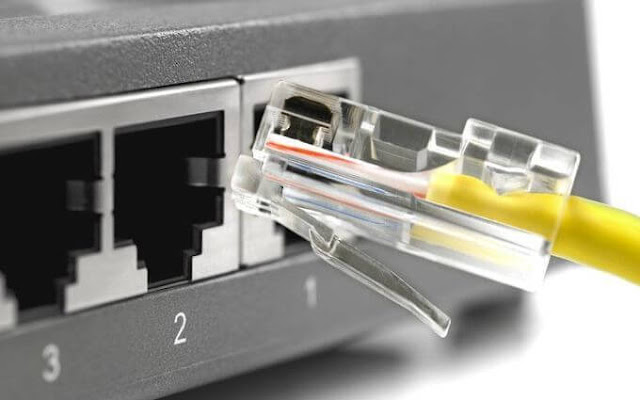Ethernet is a standard device in a computer network, commonly known as LAN (Local Area Network), its function is used to connect one computer to another.
Not all Ethernet technologies are the same. There are two standards available, Fast Ethernet and Gigabit Ethernet, each with different speeds. Let’s try to understand the differences between the two and which one to choose. Let’s learn more about Ethernet in detail.

Fast Ethernet, also known as 100BASE-T, is an Ethernet technology that has a speed of 100 Mbps. Its history began in 1980, at that time the speed was still 10 Mbps. 15 years later (1995), the latest version was called “10/100” Mbps (meaning a maximum speed of 100 Megabits per second).
Gigabit Ethernet is an Ethernet technology that has a maximum speed of 1,000 Megabits (or 1 Gigabit) per second. It appeared in 1998, Gigabit Ethernet or “10/100/1000” Mbps is now the new standard.
There is something even faster. 10 gigabits per second, but it has not yet reached widespread use in consumer products. There’s even 1,000 Gigabit per second (Terabit Ethernet) which is still under development. Most modems and routers currently come with Gigabit Ethernet interfaces.
Speed: Fast Ethernet vs Gigabit Ethernet
Fast Ethernet is an older Ethernet technology and has a speed of 100 Megabits per second, it is typically used in small office and home networks, or for connecting devices such as printers and servers to a network.
Gigabit Ethernet, on the other hand, is a newer and faster Ethernet technology with a speed of 1 Gigabit per second, or even more. It is used in high-speed networks such as data centers and large organizations, where faster data transfer speeds are required for things like video streaming, large file transfers and backups, and other high-bandwidth applications.
The general use of Fast Ethernet includes:
- For PC Desktop or Personal Laptop from low to mid level.
- For some electronic devices such as media players.
- For computer hardware such as projectors and monitors.
- For Access Point, Router, Bridge, and other computer networking hardware.
The general use of Gigabit Ethernet includes:
- For medium to large scale servers.
- For high-end desktop and laptop computers.
- For LAN, MAN, and WAN networks that require extremely fast and busy data access.
- For cable internet networks, such as for TV streaming facilities.
When Gigabit and Fast Ethernet devices are mixed on a network, it will cause the speed to be limited to the Fast Ethernet (100 megabits), meaning the speed will only reach 100 megabits. If used for transferring large files, backups, or other intensive bandwidth activities, the difference will be very noticeable.
Switch is different from Router?
Yes, switch and router are two different networking devices that serve different purposes. A switch is used to connect devices within a local area network (LAN) using MAC addresses, while a router is used to connect a LAN to other networks or the internet using IP addresses.
When buying a switch internet or a router, it’s important to pay attention to the specifications.
- A common switch will usually have a label that says “10/100 Mbps”, indicating that it has a maximum transfer speed of 10 or 100 Mbps.
- On the other hand, a gigabit switch will have a label that says “10/100/1000 Mbps”, indicating that it has a maximum transfer speed of 1000 Mbps (or 1 Gigabit per second). If you use very fast internet like google fiber router, this is enough to handle it. But need more budget to subscribe.
It’s important to buy a Gigabit Ethernet device rather than a Fast Ethernet device, even though it may be more expensive, in case you need to use a faster network in the future.






